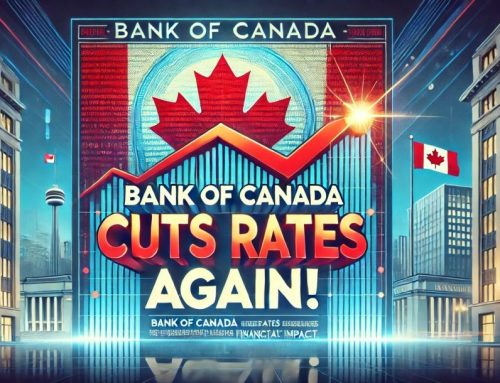Everyone loves to speculate about mortgage rates, but predictions aren’t facts. Lately, there has been a lot of talk about the Bank of Canada (BoC) cutting rate by 0.50% on October 23rd, as if it’s a done deal. But let’s be clear—while many are betting on this, it’s still just a prediction. There’s some evidence suggesting this cut may not happen exactly as expected.
Employment Influence on Mortgage Rates
The last US jobs report on October 4th reflected substantially stronger employment than what was expected. Normally, this would be a good thing. But when the central banks are trying to keep inflation down, weaker employment is what they are looking for. When employment is strong, wages rise, and the labour force has collectively more money to pour back into the economy. As the Bank of Canada needed people to spend less money, a strong labour market was counterproductive to them reaching their inflation target.
This is why bond yields reacted with an upward spike immediately following the news. The result was an increase in fixed mortgage rates by many mortgage lenders, with one hiking their 3-year fixed rate by 0.70%. Fortunately, most lenders were nowhere near this aggressive with some even leaving their fixed rates unchanged.
Then the Canadian jobs report was released a week later on October 11th , which added almost twice as many new jobs over what was expected. But this time, the bond market didn’t react the same way. After the initial spike caused by the US data, Canadian bond yields have been steadily declining, showing a more muted response to domestic employment news.
Inflation Continues to Fall
On October 15th, Statistics Canada reported that inflation slowed to 1.6% for September. The Bank of Canada’s goal was to bring the inflation rate down to 2.00%, which it achieved roughly a year earlier than they expected. They have not just reached the goal early, but they have surpassed it.
Mixed Signals Influencing the Bank of Canada’s Decision
The strong employment numbers on both sides of the border suggest that the BoC might reconsider the much-anticipated 0.50% cut on October 23rd. However, with inflation now under control, there’s also an argument for moving ahead with the full cut.
These conflicting signals create uncertainty. While a rate cut seems likely, the size of that cut—whether 0.50% or a more cautious 0.25%—remains up in the air.
Mortgage Rates will Continue to Fall
The long-term outlook remains for the Bank of Canada to continue cutting their rate. Whether we see 2.00% in cuts by summer 2025 as some economists are forecasting… or whether we see them take a much more conservative approach is unknown. There is a lot that can happen between now and the spring.
Remember, fixed mortgage rates won’t always fall in a straight line. We’ll continue to see some short-term bumps, like the recent rate increases that followed the US jobs report. However, these don’t necessarily mean the overall downward trend is over. Fixed rates can sometimes rise unexpectedly, even when the BoC is cutting its rates.
Final Thoughts
When it comes to rate decisions, there’s always more at play than meets the eye. Predictions like the 0.50% rate cut for October 23rd might sound like a sure thing, but circumstances can shift. That’s why long-term rate forecasts are often a moving target. Forecasts are one thing. Reality is another… and they don’t always align.
As for what the BoC will do next week? A rate cut seems likely—but whether it’s 0.50% or 0.25%, we’ll just have to wait and see.








Leave A Comment